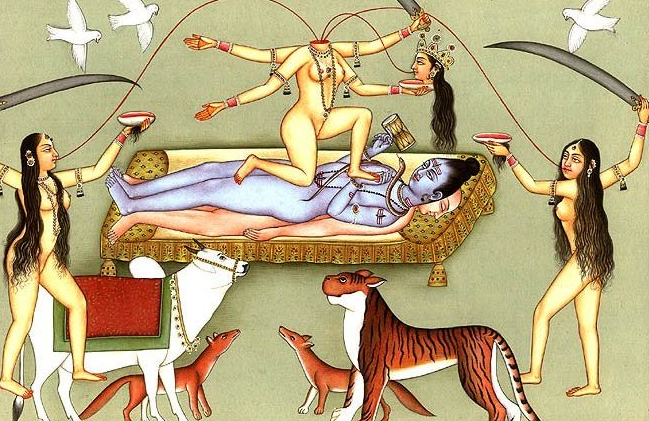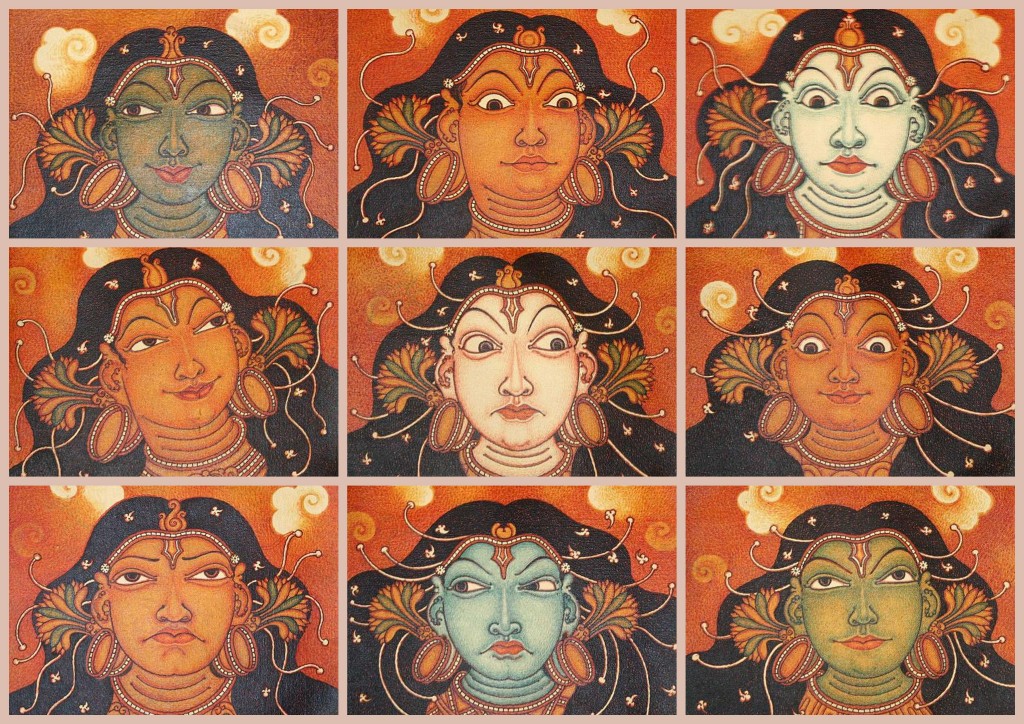- Visitor:27
- Published on: 2025-09-03 05:10 pm
Rani Bhabani of Bengal and Her Devotion to Sanatana Dharma
In the heart of 18th-century Bengal, a queen’s devotion to faith and people left a legacy that still resonates today. Rani Bhabani (1716–1795), the illustrious zamindar of Rajshahi, is celebrated not only for her wisdom and generosity but also for her unwavering devotion to Sanatana Dharma. Under her guidance, temples rose across the countryside, sacred endowments were given generously, and charitable works flourished—roads, ponds, and inns served the people, reflecting her belief that dharma should guide every act of leadership. It may astonish many to learn that the illustrious Durga Kund Mandir of Varanasi, a paragon of devotion and architectural splendor, owes its existence to Rani Bhabani. This article delves into the life of the dharmic queen whose devotion and benevolence transcended time.
.jpg)
Early Life and Ascension
Born into a Brahmin family in Bogra to Atmaram Chowdhury, she was married to Raja Ramkanta. Tragedy struck with his untimely death in 1748, yet she rose to assume the responsibilities of the zamindari with grace and determination. Widowhood did not deter her; instead, it strengthened her resolve. Over the next forty years, she ruled with fairness and foresight. Her reign was distinguished not only by administrative skill but also by deep spiritual commitment, which shaped every decision she made.[1]
Administrative Acumen and Welfare Initiatives
Rani Bhabani’s governance was a remarkable blend of administrative acumen, compassion, and religious commitment, particularly during the turbulent era of the East India Company. [1] Her estates spanned present-day Rajshahi, Pabna, Bogra, Kushtia, Jessore, Rangpur, Murshidabad, Birbhum, and even Malda, making her one of Bengal’s most powerful rulers. From 1748 to 1802, she governed this immense territory with exceptional tact and tenacity, earning the reverent title of “Ardhabangeswari.”[2] She dug hundreds of ponds, constructed inns for travelers, and laid roads connecting distant towns—from Howrah to Kashi—ensuring that her people had access to essential infrastructure. Even before her marriage, she had dug 360 ponds in her father’s zamindari, reflecting her early commitment to community welfare. [2] She commissioned the Natore–Bhawanipur thoroughfare, still known as Rani Bhabanir Jangal, and funded numerous tanks and sarais to provide water and shelter. She supported village doctors who offered medical care to the poor, and her compassion extended even to animals, reflecting the remarkable scope of her benevolence and just governance.
Patron of Sanatana Dharma & Benevolent Builder of Temples
Rani Bhabani was not only a capable ruler but also a devout custodian of dharma, who understood that true leadership extends beyond administration to nurturing spiritual life. She dedicated a significant portion of her lands as Lakhiraj—rent-free estates granted to Brahmins for their sustenance and for conducting charitable and religious activities. By doing so, she ensured that the keepers of dharma could live, teach, and serve communities without financial worry, strengthening the spiritual fabric of her realm.[1] According to the Rajshahi Gazette, she was responsible for the establishment of nearly 380 shrines, temples, and guesthouses across Bengal, endowing each generously with land, funds, and resources for maintenance. These sacred spaces became centers of worship, learning, and community interaction, reflecting her vision of governance guided by dharma.[1]
She was a passionate supporter of Hindu scholarship and education, providing generous endowments to ensure the preservation and propagation of sacred texts, rituals, and philosophical learning. Students and scholars across her territories benefited from her foresight and dedication, which strengthened the intellectual and spiritual life of her realm. [1] Rani Bhabani’s dharmic vision transcended both time and geography, leaving an enduring mark on Hindu culture and spiritual life across India. Her dharmic endowments extended far beyond the borders of her zamindari in Bengal. Recognizing Kashi’s unique spiritual and cultural significance, she consecrated the Bhavanishwar Shiva Temple, creating not just an architectural marvel but a hub of religious life. Beyond the temple itself, the Rani actively supported Brahmins in the city, providing stipends, sustenance, and resources for teaching and preserving sacred texts.[2]
By strengthening one of Sanatana Dharma’s most vital spiritual cities, she ensured that her devotion and patronage would impact generations to come. Pilgrims, scholars, and devotees continued to benefit from her endowments long after her lifetime.
The Durga Kund Temple in Varanasi
Among Rani Bhabani’s most celebrated contributions to Hindu devotion is the Durga Temple at the Durga Kund in Varanasi, one of the city’s most revered shrines. Constructed in the 18th century by the Rani, the temple stands as a magnificent testament to her faith and patronage.[3] The temple is built in the North Indian architectural style, characterized by its elegant multi-tiered shikharas painted in vibrant red and ochre, mirroring the radiant hues of the central idol of Maa Durga, the goddess of strength, courage, and protection. Inside, intricately carved and engraved stones adorn the temple, while numerous smaller shikharas merge to form its striking structure.[3] Enhancing its beauty is the Durga Kund pond positioned to the right of the temple. The pond, with its stone steps on all sides and watch pillars at each corner, provides a serene space for rituals, meditation, and community gatherings, integrating natural and architectural beauty.[3] The presence of the Kund also emphasizes the traditional Hindu belief in the sanctity of water as a purifier and a source of life, further underlining Rani Bhabani’s holistic approach to spiritual spaces.
Even today, the temple stands as an epitome of worship, drawing devotees from Kashi and pilgrims from far and wide who come to offer their prayers and seek blessings.
Legacy
After her glorious rule that spanned over decades, Rani Bhabani passed away in 1795 at Baranagar at the age of 79.[1] Every temple she consecrated, every pond she dug, and every road and inn she established reflected her belief that governance must serve both the spiritual and material welfare of her people. Her patronage of scholars, Brahmins, and sacred centers, reaching even the holy city of Kashi, ensured that dharma would flourish far beyond the borders of her kingdom and long after her reign. Centuries may pass, yet the memory of this Dharmic Queen of Bengal shines ever bright, a luminous beacon of spiritual leadership and righteous rule. True to the eternal truth of “Dharmo Rakshati Rakshitah”—dharma protects those who uphold it—her life, marked by unwavering devotion, compassionate governance, and fearless stewardship of Dharma, continues to inspire generations.
Sources:
Rani Bhabani [Web page in English]. (2021, July 14). Banglapedia. Retrieved August 26, 2025, from https://en.banglapedia.org/index.php/Rani_Bhabani
Bongodorshon. (2019, April 4). Rani Bhabani of Natore [Article in Bangla]. Bongodorshon. Retrieved August 26, 2025, from https://www.bongodorshon.com/home/story_detail/rani-bhabani-of-natore
Bhaktikalpa. (n.d.). Durga Mandir. Retrieved August 26, 2025, from https://bhaktikalpa.com/special_temple_details.aspx?id=4988
Rani Bhabani [Web page in English]. (2021, July 14). Banglapedia. Retrieved August 26, 2025, from https://en.banglapedia.org/index.php/Rani_Bhabani
Bongodorshon. (2019, April 4). Rani Bhabani of Natore [Article in Bangla]. Bongodorshon. Retrieved August 26, 2025, from https://www.bongodorshon.com/home/story_detail/rani-bhabani-of-natore
Bhaktikalpa. (n.d.). Durga Mandir. Retrieved August 26, 2025, from https://bhaktikalpa.com/special_temple_details.aspx?id=4988
- 13 min read
- 0
- 0










